Hawaiian Airlines CEO Shares Starlink, Dreamliner Expansion Plans
In a roundtable, Hawaiian Airlines CEO, Peter Ingram, and Chief Marketing Officer, Avi Mannis share what's on tap for the airline
by Rachel Dube
May 8, 2024
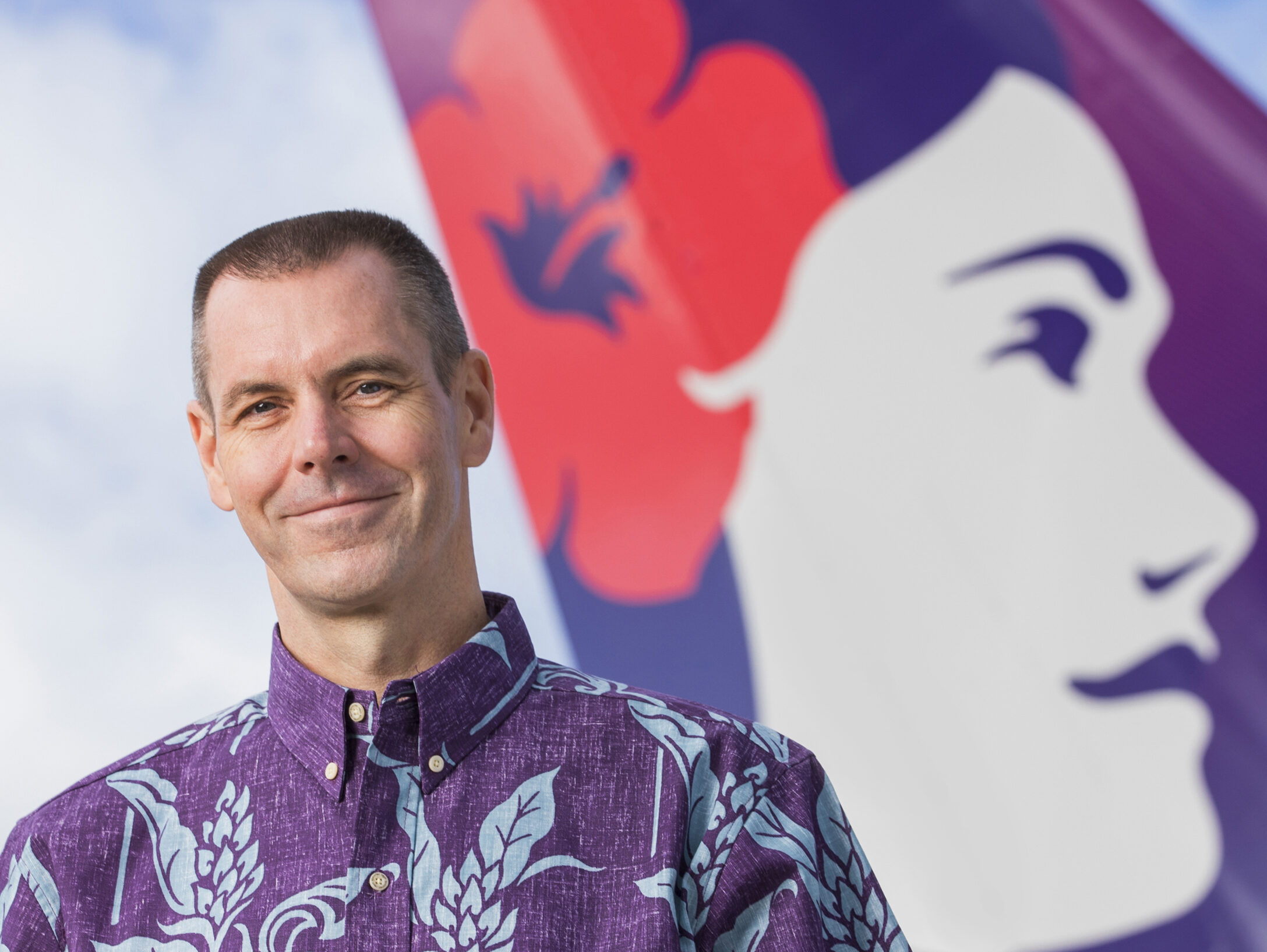
Photo: Hawaiian Airlines CEO Peter Ingram February 6, 2018 Honolulu, HI. Photo by Marco Garcia
Hawaiian Airlines is having a big year. The airline, headquartered in Honolulu, has launched its new flagship, the Boeing 787-9 Dreamliner, which includes the highly anticipated Leihōkū suites—the biggest passenger experience upgrade the airline has ever introduced.
As the airline celebrated the deployment of its newest product and navigates through its proposed merger with Alaska Airlines, CEO Peter Ingram and Chief Marketing Officer Avi Mannis recently discussed the brand’s plans for the future with Business Traveler.
“It’s our 95th anniversary this year, so we have several things planned over the course of the year to celebrate that,” explains Mannis. These plans include the launch of the 787, the rollout of Starlink across all long-haul flights, and the merger with Seattle-based Alaska Airlines.
All About The New Aircraft Design
Unlike other airlines, Hawaiian Airlines has focused its new Business Class cabin on leisure travelers. The entire aircraft plays an ode to Hawaii from the name to the design.
“Hawaii’s got a great design culture to it, but we always start with the story,” explains Mannis. The story has always been about Pacific voyaging for the airline’s long-haul aircraft.
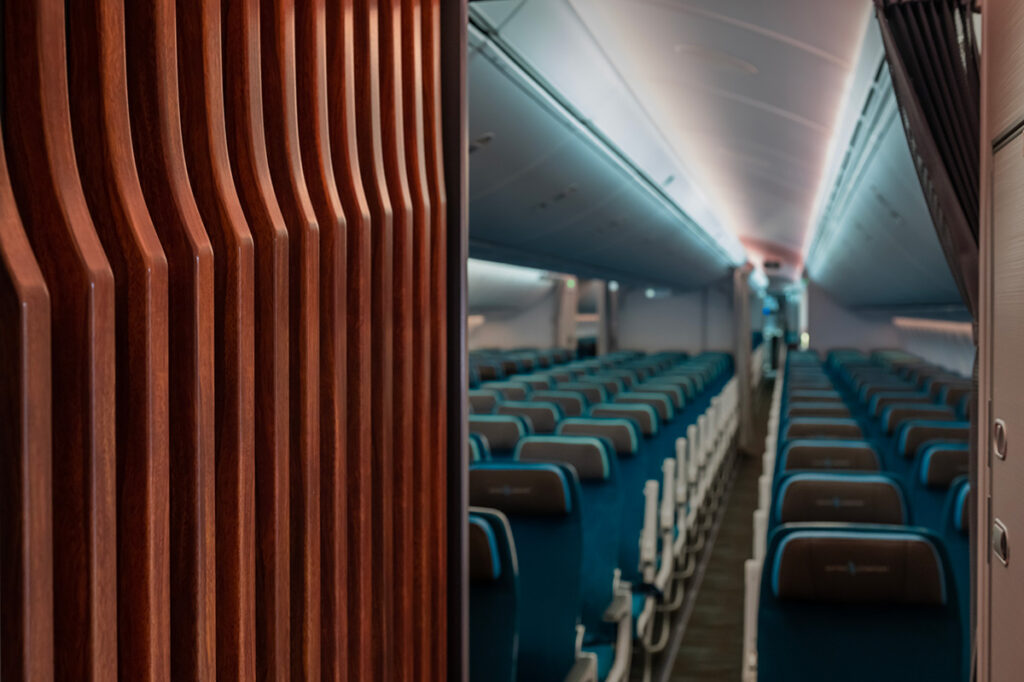
Photo: Courtesy of Hawaiian Airlines
“We always try to start with something that is rotted in place and tradition but then find ways to express it in a more modern kind of way, so the fiberglass optics in the ceiling are a good example. Super high technology solution to stimulate something that is part of the legacy and history of this place,” he explains.
The brand also tried bringing as many natural materials as possible, which isn’t an easy feat on an aircraft. “You can’t use any natural materials [onboard an aircraft], so the wood slats and the entryway, which are inspired by the forms of canoes and the shapes of waves, were crafted in a way that gave the appearance of wood but still could be certified on an aircraft.”
Hawaiian’s Starlink Rollout
Passengers aboard select Hawaiian Airlines flights can enjoy free high-speed Wi-Fi, even on long-haul journeys across the Pacific, thanks to the airline’s pioneering satellite internet technology powered by SpaceX’s Starlink.
The cutting-edge technology is already available on six Airbus A321neos. Ingram stated that the expansion of Starlink is highly anticipated.
Hawaiian Airlines is one of the last airlines to introduce in-flight connectivity because most connectivity began with ground-based towers. Since most of Hawaiian’s flights are over the ocean, connectivity would not have been useful for passengers.
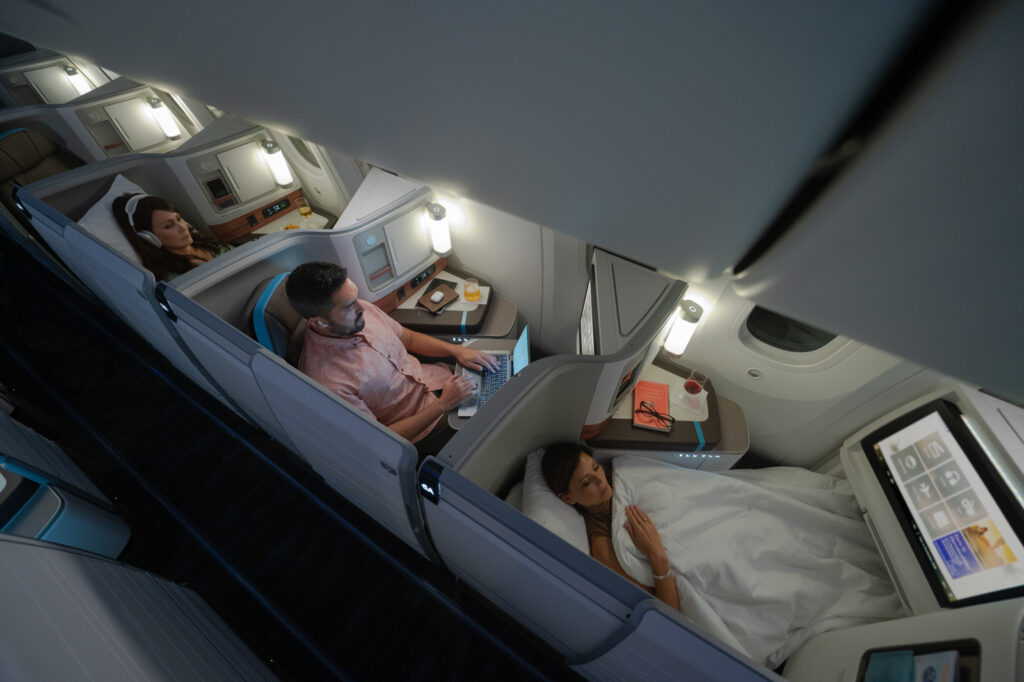
Photo: Courtesy of Hawaiian Airlines
“By the time we started considering it, there was a new technology that provided much more bandwidth than what people had previously experienced, along with much faster connection speeds,” said Ingram. “People can connect multiple devices and still enjoy high-quality service, which is better than the typical airline WiFi experience.”
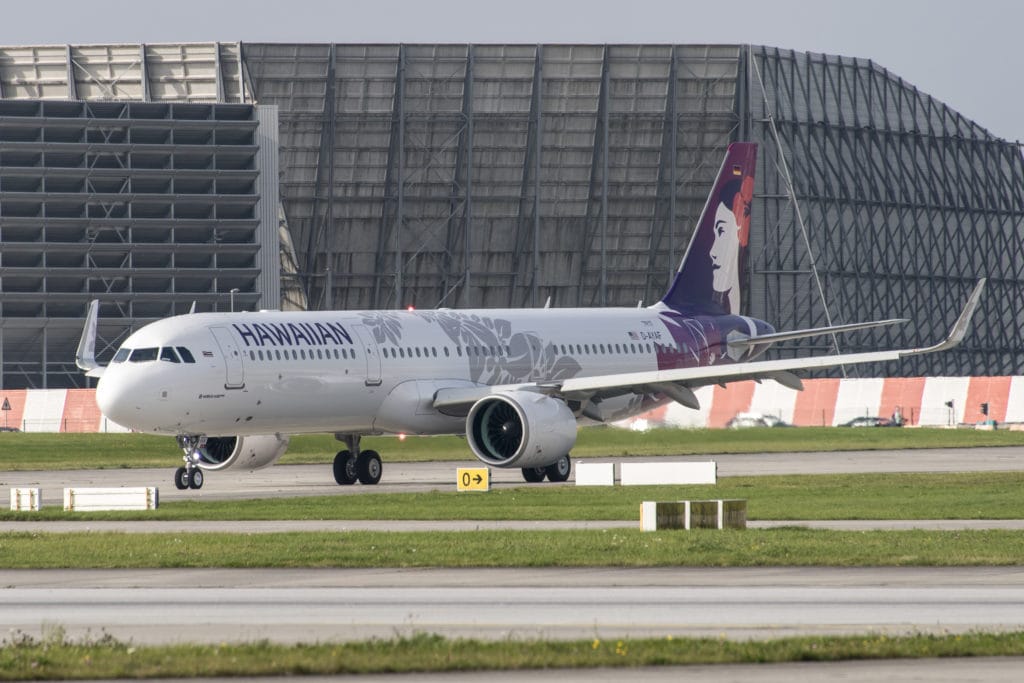
Photo: Courtesy of Christian Brinkmann / Airbus
With the rollout, Hawaiian Airlines will offer complimentary connectivity to its passengers. It will begin with the Airbus A321neo aircraft and then continue through the rest of the long-haul fleet.
“We’re eager to get it deployed on the A330 [of which] the prototype is already in the works. We’ll have that up and running by the end of the year, and eventually, it’s going to go on the 787s as well.”
Dreamliner Expansion
Currently, the Dreamliner airplane is operating daily between San Francisco and Honolulu. Its next routes will be on select routes from Honolulu to both Los Angeles and Phoenix.
According to Ingram, the airline aims to eventually get the Dreamliner on some of its key long-haul routes. However, for now, the airline is focusing on having its initial pilots gain operating experience, so they are using shorter West Coast routes.

Photo: Courtesy of Hawaiian Airlines
Additionally, the aircraft requires overnight maintenance every three days, and since this maintenance takes place on the West Coast, it makes logistical sense. Nonetheless, expansion plans are already in progress.
“You want to go somewhere where there’s a ton of demand overall to take advantage of the larger front cabin. You’re going to see New York, and you’re going to see Sydney as Japan’s demand continues to recover,” explains Ingram.
“Japan is a very logical market for it, so we’ll be mixing it in over time, but I think you can think that as we get up to five or six airplanes in the next couple of years, seeing it in New York and seeing it in Sydney are pretty high priorities on our list.”
Plans For Apartment 1929
Post-pandemic, Hawaiian Airlines has seen a huge demand for premium travel experience. Just recently, the airline introduced an all-new high-end airport lounge called Apartment 1929, which allows passengers to unwind before and after their flights in utmost comfort.
According to Mannis, “Premium airport service is an attempt for us to create a sort of a curb to aircraft door experience that reflects some of the hospitality that we deliver in flight in the airport.”
Mannis stresses that the primary objective is to establish the service in Honolulu, but they plan to expand it to other Hawaii airports without competitive products. He also hints that Maui could be the next place where they would like to extend their premium airport service.
“We don’t have any specific timeline for that, but we’re in the process of building a new lounge space in Maui, and we’ve programmed some space that we could use for that. We’re still in growth mode and scaling up, but I think we do think there’s a fit for us within other Hawaii airports. There are competitive offerings in some of the big mainland cities, so we probably will work through partnership rather than starting something ourselves.”
On Sustainability
While Hawaiian Airlines has nothing concrete regarding Sustainable Aviation Fuel (SAF), the airline focuses on sustainability in every avenue it can. The first is the Boeing 787, which is more efficient than any comparable widebody of the prior generation.
“We’re based in a place that depends on air travel to connect us to the world and so we have to continue to do that, but finding ways to do it more efficiently to reduce our emissions profile over time is really important to us. It’s something that we approach with a great sense of urgency and having more fuel-efficient aircraft is one of the things that we can do in the very near term to reduce the intensity of emissions, carbon emissions associated with our operation,” explains Mannis.
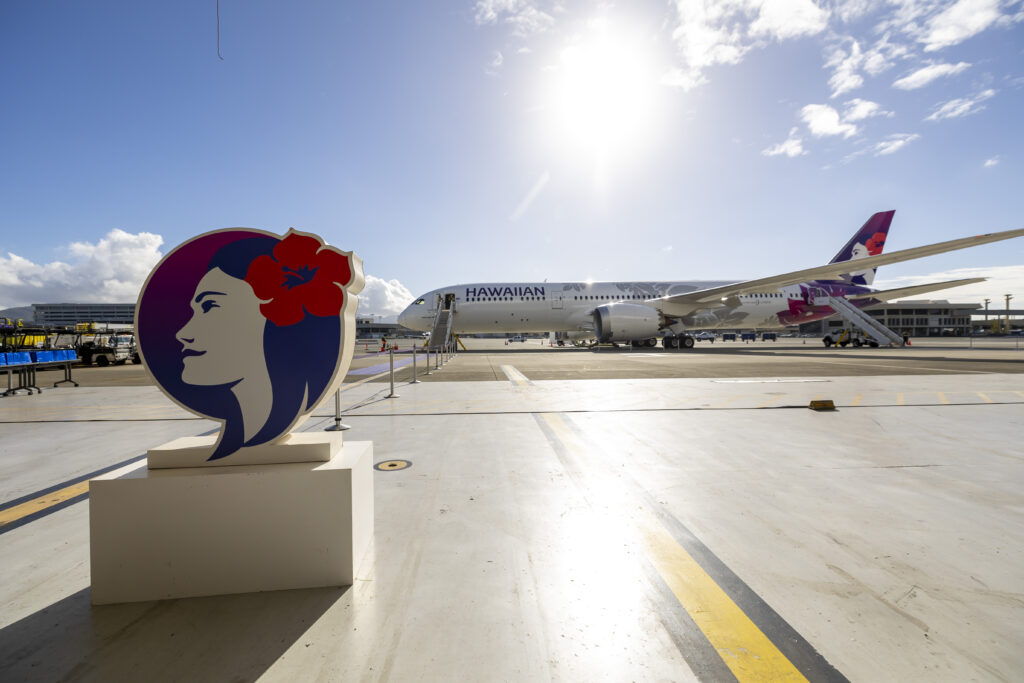
Photo: Courtesy of Hawaiian Airlines
However, the airline has begun making investments for the future through SAF. “There’s only one oil refinery here in the state of Hawaii, and we’ve worked with them in a partnership to build the business case to convert part of their facility to making sustainable fuels, including sustainable aviation fuels,” he says.
“They’ll start making those out of vegetable oils, starting with imported vegetable oil, which isn’t great, but we’re working with another organization on crop trials to figure out what we can grow here.”



